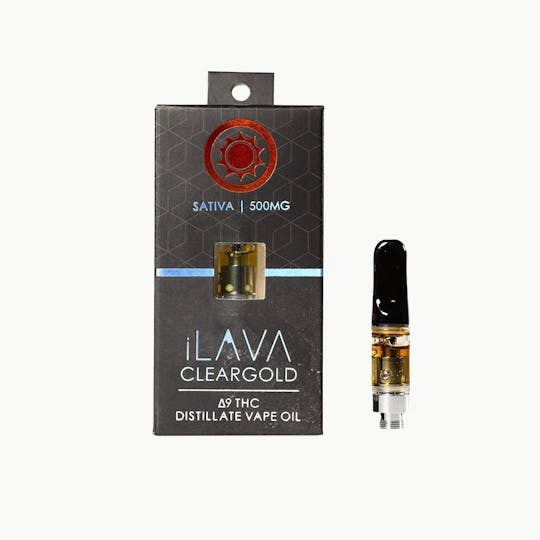
ClearGold Cartridge 500mg - Durban Poison
This pure sativa originates from the South African port city of Durban. It has gained popularity for its energetic, uplifting effects and is the perfect strain to help you stay productive through a busy day or to lend a spark of creativity. An active, buzzy head high that is almost entirely cerebral with no hints of debilitating heaviness or couchlock. Durban Poison can also be a strong social reassurance, helping users to feel chatty and more at ease. -- iLAVA ClearGold vape cartridges are rich in cannabinoids and terpenoids and are manufactured using best practices for clear distillation. Our cartridges contain No Vitamin E Acetate, No lipids, No Residual Solvents, No polyethylene glycol, No propylene glycol, No MCT oil, and No vegetable glycerin. iLAVA ClearGold cartridges contain naturally derived Terpenes and have been tested to show No glycerin derivatives. No pesticides are applied on any marijuana plants used in the production of iLAVA ClearGold vape cartridges. -- iLAVA cartridges should be used only with genuine CCELL batteries.
- Earthy
- Woody
- Spicy/Herbal
iLAVA is a family of premium cannabis products developed by industry pioneers and rooted in wellness cannabis. Our award-winning vapes, edibles, topicals, and concentrates have made us one of Arizona’s best-selling brands.
Durban Poison has deep roots in the Sativa landrace gene pool. The strain’s historic phenotypes were first noticed in the late 1970s by one of America’s first International strain hunters, Ed Rosenthal. According to cultivation legend, Rosenthal was in South Africa in search of new genetics and ran across a fast flowering strain in the port city of Durban. After arriving home in the U.S., Rosenthal conducted his own selective breeding process on his recently imported seeds, then begin sharing. Rosenthal gave Mel Frank some of his new South African seeds, and the rest was cannabis history.
Frank, who wrote the “Marijuana Grower’s Guide Deluxe" in 1978, modified the gene pool to increase resin content and decrease the flowering time. In search of a short-season varietal that could hit full maturation on the U.S. East Coast, Frank’s crossbreeding efforts resulted in two distinct phenotypes, the “A” line and “B” line. The plant from Frank’s “A” line became today’s Durban Poison, while the “B” line was handed off to Amsterdam breeder David Watson, also known as “Sam the Skunkman.”
Durban Poison has a dense, compact bud structure that’s typical of landrace Indica varieties, but the flowers’ elongated and conical shape is more characteristic of a Sativa.